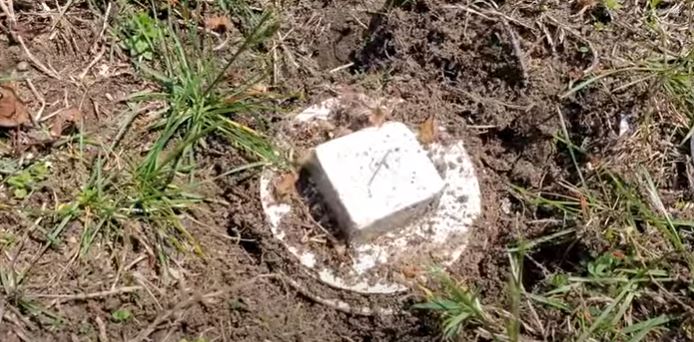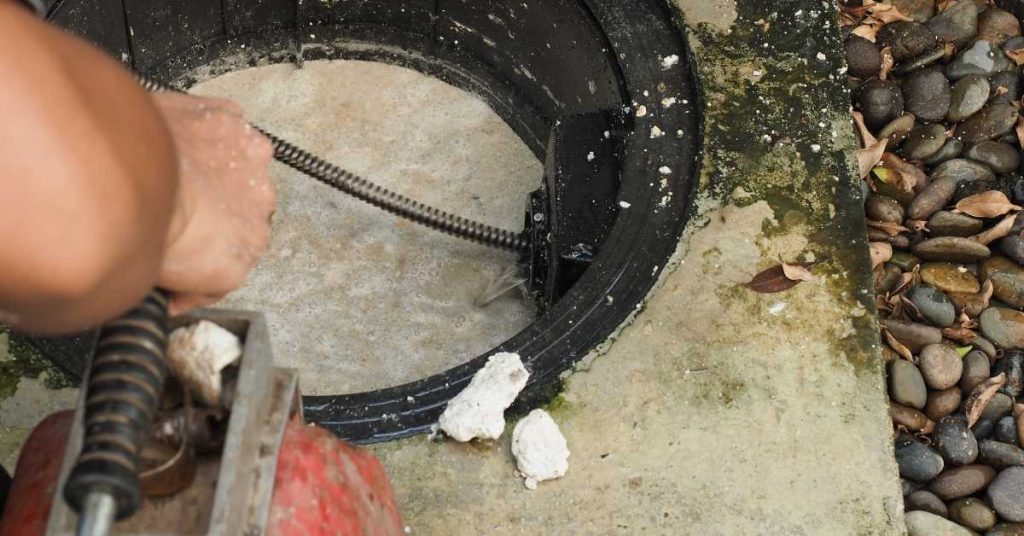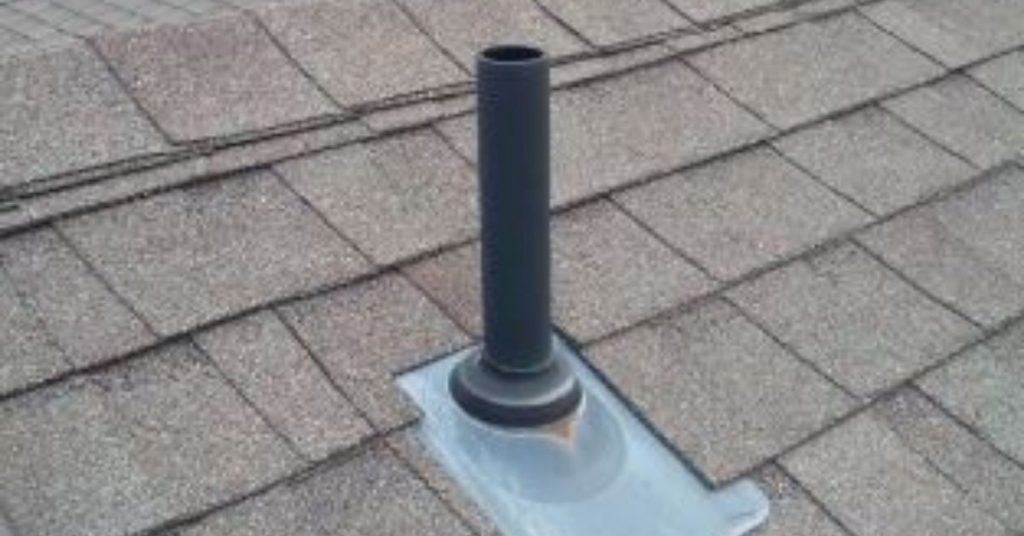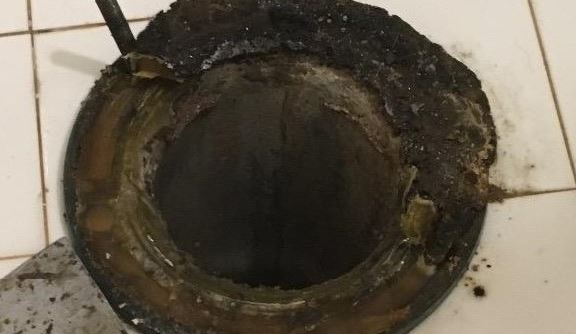
To unclog your main sewer line, locate the sewer cleanout and slowly remove the cap to release pressure. Use a drain auger/snake to clear the clog. If you don’t have a sewer cleanout, you can unclog the sewer line through the plumbing vent or remove the toilet and access the sewer line from its drain.
Unclogging a main sewer line is a challenging task that often requires professional intervention due to its complexity and potential risks. However, here’s a brief guide outlining steps you can take to attempt unclogging a main sewer line on your own, keeping in mind that severe blockages may necessitate expert assistance:
How to Unclog a Main Sewer Line
1. Gather Supplies:
- Drain auger (also known as a sewer snake)
- Bucket or container
- Rubber gloves
- Safety goggles
2. Safety Precautions:
- Put on rubber gloves and safety goggles to protect yourself from sewage and debris.
3. Locate the Cleanout:
- Find the main sewer line cleanout, typically a capped pipe located in your basement, crawlspace, or outside your house near the foundation. It may have a rectangular or circular plastic or metal cap.
4. Prepare the Area:
- Clear the area around the cleanout to allow access and place a bucket or container nearby to catch any water or debris that may come out during the process.
5. Remove the Cleanout Cap:
- Using a wrench or pliers, carefully remove the cleanout cap. Be prepared for water or sewage to flow out once the cap is removed.
6. Insert the Drain Auger:
- Feed the drain auger cable into the cleanout opening while turning the handle clockwise. Continue advancing the cable until you encounter resistance.
7. Break the Blockage:
- Once you feel resistance, the cable has likely reached the clog. Rotate the auger handle in both directions (clockwise and counterclockwise) to break up the blockage.
8. Extend the Cable:
- Extend the cable as needed to reach further into the main sewer line, working slowly and methodically.
9. Retrieve the Cable:
- Gradually retract the cable while continuing to rotate the handle. This action should bring debris and clog material back with it.
10. Clean Up:
- Dispose of any debris and wastewater properly, and replace the cleanout cap securely.
11. Test the Drain:
- Run water down the drain or flush toilets to check if the blockage has cleared. If the water flows freely, you’ve likely resolved the issue.
12. Prevent Future Blockages:
- Consider taking preventive measures such as regular drain maintenance, avoiding flushing non-flushable items, and scheduling professional inspections of your main sewer line.
The national average cost of unclogging the main sewer line is $475, with an average cost of between $350 and $650. You can pay as low as $70 and as a high as $3000 depending on the type of clog and the job difficulty.
The Signs
So how do you know that your sewer line is clogged? The following are some of the telltale signs of a Clogged Sewer line:
1. Slow Drains
Are your fixtures (toilets, sinks, showers and washing machines) draining slower than usual? You most likely have a clogged sewer line. Some clogs start as partial ones, which mean they only allow a little amount of wastewater to pass through.
You should however learn to distinguish if you are dealing with a clogged plumbing vent or sewer line. A clogged plumbing vent means that air is not getting inside the drainage system and as a result fixtures will drain slowly.
It is important that you also ensure that the problem is affecting all drains and not just one of them. If the problem is only affecting the shower drain or toilet, the clog is inside the respective fixture drain line.
2. Backing Up Drains
Another clear sign that your sewer line is clogged is when your flush the toilet and water starts to back up from the shower or tub drain. You can also notice the toilet bubbling when you drain the shower or sink.
Since the sewer line is full of water which is restricted from flowing out by the clog, the wastewater will start to back up from the drains when more is added.
The first thing you should do when you notice drains backing up is to turn off water to the house and avoid using all the water fixtures until the sewer line is unclogged. Sewer backups expose your family to health hazards which you should avoid.
Causes
Whenever you have a clogged main sewer line, the clog will usually be as a result of one of the following:
- Tree roots
- Flushing what you shouldn’t
- Grease in the sewer line
- Old sagging lines
Tree roots will natural grow towards a source of water and nutrients. A sewer line provides both of those things. If you have an old porous sewer line or one with tiny cracks, tree roots will penetrate through them and multiply once inside the sewer line.
Check out how to kill tree roots in sewer lines in this post.
You can’t control how tree roots grow in your property but you can definitely control what you flush down the toilet. Unless it is human waste or toilet paper then it shouldn’t be flushed.
When using toilet paper, avoid using too much of it as that will also cause clogs. The so called “flushable wipes” are actually not flushable. You will manage to flush them out of your toilet since you may have a strong flushing toilet but they will cause a clog after some time.
Pouring grease down the drains is another thing that clogs sewer lines. Some people say it is okay to do so as long as you run hot water later but it isn’t.
The hot water will cool down and the grease will then solidify. If the grease combines with other items in the wastewater like wet wipes or baby diapers, they will form a really nasty clog and your drains will start to back up.
Due to old age, soil movement or poor installation, some sewer lines will start to stag, which acts as a restriction preventing it from draining properly. If this is the case you will most likely need to replace your sewer line.
How to Clear the Main House Sewer Line
Now that you have established that your main sewer line is clogged, you should try unclogging it before calling in a plumber. As you already know, plumbers are not cheap.
Here are the steps to follow when unclogging a sewer line.
1. Locate the Sewer Cleanout.

A sewer cleanout is a piece of pipe that allows you access to the sewer line. This is the section between the house and the street or septic tank.
Sewer cleanouts can be located inside the house or outside. If the cleanout is inside the house, look for it in the basement, crawlspace or garage where it forms a Y or T with the sewer line.
Outside the house, the sewer cleanout will be located very close to the house. It will most likely be a 4-inch pipe sticking a few inches from the ground. Most cleanout have a cap with a square nut at the top.
Br careful since some cleanouts are covered using flower beds or fully covered by mulch and are therefore not very easy to locate.
2. Release Pressure from the Sewer Cleanout
Since there will be a water column inside the sewer line, pressure will have built up and that is why you need to open the cleanout cap/plug slowly to release it.
I must mention that you need to be appropriately dressed for the job. As a minimum you should have gloves, goggles, boots and a waterproof suit or old clothes.
If the cleanout is inside the house place a bucket under it to catch any water that may spill. For cleanout located outside the house, some water will spill on the ground which is not that bad for your plants.
- Grab the cap nut with a wrench and slowly turn it counterclockwise to loosen it.
- Stop immediately you hear pressure being released.
- Wait until all the pressure has been released.
- Remove the cap completely.
Usually, if the sewer clean is full of water, you have a clog in the sewer line somewhere between the house and the street. If not, the clog is inside the main house drain stack.
Some people have 2 sewer cleanouts. If this is the case in your property, just know that one cleanout is used to snake the sewer line while the other is used to snake the drain stack in your house.
3. Unclog the Sewer Line with a Snake

The type of drain snake/auger that is used to unclog a sewer line is not something you will have lying around in your garage. It is expensive equipment and you will rarely need to use it.
Instead of going ahead and buying one, you can rent one from your closest plumbing store. It will come with different blade sizes (but you can just ask to be sure).
The good thing about these drain augers is that they are motorized and you don’t need to keep cranking a handle.
- Once you have the drain auger, start by first connecting the half blade. I always find it better to start off with a smaller blade.
- Hook up the drain auger to an electrical source.
- Start feeding the cable down the sewer line via the sewer cleanout. It is important to make sure that you are pushing the cable in the sewer line and not back to the house. This is usually hard to see since the cleanout is usually full of water and hard to see.
- As the cable twists and turns inside the sewer line it will grind whatever that is clogging it. A good sign that the sewer line has been unclogged is when the water in the sewer cleanout drains.
- Pull out the drain auger and go in again but this time with a full blade and past the initial clog just to make sure the sewer line is completely opened.
No Cleanout in the House?
So, how do you unclog the main sewer line if your house does not have a sewer cleanout? There are 2 ways you can do this:
- Remove the toilet and access the sewer line through its drain
- Snake the sewer line via the plumbing vent.
The success rate using any of the 2 methods is not as high as when using a sewer cleanout. As a matter of fact plumbers do not warranty their work when they work on the sewer line through the toilet drain or plumbing vent.
These are however they only ways to clear the clog from the sewer line unless you want to dig out the sewer lines.
1. Through the Plumbing Vent

A plumbing vent is the vertical pipe which runs through the roof of the house. It removes sewer gases form the drains and also introduces air, allowing fixtures to drain faster.
It is connected to the main drain stack just above the fixture on the highest floor level. As you know the main drain stack is connected to the sewer line, so the plumbing vent gives you direct access to the sewer line.
Climb to the roof of your house armed with the drain snake and remove the cap from the top of the plumbing vent if there is one.
Start feed your drain auger down the vent stack until you get to the clog. If the clog is not a nasty one you will be able to clear it fairly fast.
2. From the Toilet Drain
Unlike other water fixtures in your house, a toilet is connected directly to the main drain stack and also has a big drain line (usually 3 or 4 inches). It is therefore the best fixture to give you access to the sewer line.
You however cannot push the drain snake through the toilet bowl outlet. The toilet will need to first be removed. You will also need a helper and a brand new toilet wax ring.
Here is how to unclog the main sewer line from the toilet:
- Turn off water to the toilet. The shut off valve is on the wall behind the toilet.
- Flush the toilet and hold down the trip lever to remove as much water as possible.
- Remove the tank lid and place it away where it cannot fall off and crack.
- Soak up the water left at the bottom of the tank
- Put on your gloves and also soak up the water at the bottom of the toilet bowl.
- Disconnect the water supply hose. It is connected from underneath the toilet tank.
- Remove the toilet tank bolts. These bolts are on each side of the bowl and may be covered with plastic caps. Pry off the caps with a screwdriver and loosen the bolts with a wrench. If the bolts are old and corroded cut off the nuts with a hacksaw blade.
- Grab the toilet bowl with both hands and rock it back and forth to break the wax seal.
- Lift off the toilet and lay it on its side slowly.
- Scrape off old wax from the toilet bowl outlet and top of the closet flange.

- With the toilet out, push your drain snake down the toilet drain until you reach the clog.
- Use different blade sizes until the sewer line is unclogged.
- Set the new wax ring nicely on top of the closet flange.
- Lift off the toilet and bring it above the drain.
- Lower it slowly, as your helper aligns the toilet bolts with the holes on the bowl.
- Put it down gently and push it down to fully engage the wax ring. Don’t rock it though.
- Put a washer and nut on each bolt and tighten alternatingly to keep it level.
- Connect the water supply hose to the tank.
- Turn the water back on and flush it a few times to check for leaks.
- Put the tank lid back on.
And basically that is how to unclog a main sewer line. I hope this guide was helpful.
